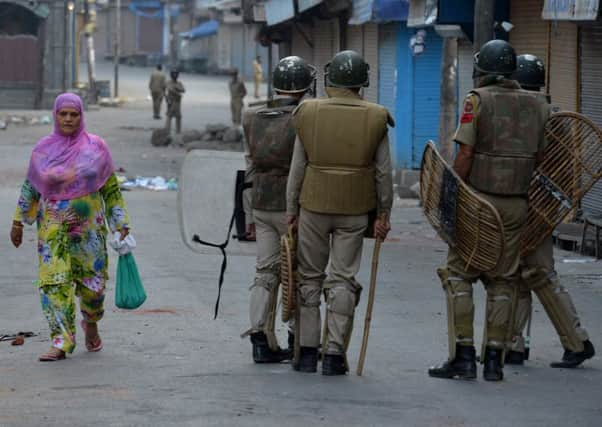Kashmir seethes as 22 killed amid anti-Indian protests


Paramilitary troops and police in riot gear patrolled villages and towns in the Himalayan region. Most shops were shuttered, businesses were closed, and mobile internet services were suspended in parts of the region. But by noon, crowds were ignoring the clampdown to gather in parts of the main city of Srinagar and other locations.
The region erupted in protests on Saturday, a day after Indian troops killed Burhan Wani, the young leader of Kashmir’s largest rebel group, Hizbul Mujahideen, which has been fighting since the 1990s against Indian rule. Wani, in his early 20s, had become the iconic face of Kashmir’s militancy, using social media to rally supporters and reach out to other youths like him who had grown up amid hundreds of thousands of Indian armed forces deployed across the region.
Advertisement
Hide AdAdvertisement
Hide AdPolice Inspector-General Syed Javaid Mujtaba Gillani described Wani’s killing as the “biggest success against militants” in recent years.
As news of his death spread, spontaneous protests erupted and crowds of angry youths gathered to throw rocks at Indian police and paramilitary soldiers, shouting “Go India, go back!” Police said that some police and paramilitary posts were attacked, and that some homes of pro-India politicians were burned.
At least 21 civilians and one policeman have died from wounds sustained in clashes Saturday and Sunday, as law enforcement officers used live ammunition, pellet guns and tear gas to try to break up the protests.
Most of those killed were young men under the age of 26 from southern Kashmir, police said. In addition, more than 150 civilians and 100 government troops have been injured. At least 10 of the injured civilians were in serious condition.
In several neighbourhoods in Srinagar, activists painted graffiti on iron shutters of shops and walls, deploring India and eulogising Wani. Messages that they wrote included “Burhan our hero” and “Burhan still in our hearts.”
Anti-India sentiment is strong throughout India’s portion of Kashmir, a region of 12 million people, about 70 per cent of whom are Muslim. Many resent the deployment of hundreds of thousands of Indian troops, and openly voice support for rebels who have been fighting since the 1990s to demand independence or a merger with neighbouring Pakistan.
Both India and Pakistan claim all of Kashmir as their own, while each administers a part of the mountainous region. The two sides are divided by a heavily militarised Line of Control. Two of the three wars between the nuclear-armed rivals were fought over Kashmir, and India continues to accuse Pakistan of arming and training anti-India rebels - a charge Pakistan denies.
More than 68,000 people have been killed in the uprising and the subsequent Indian military crackdown.